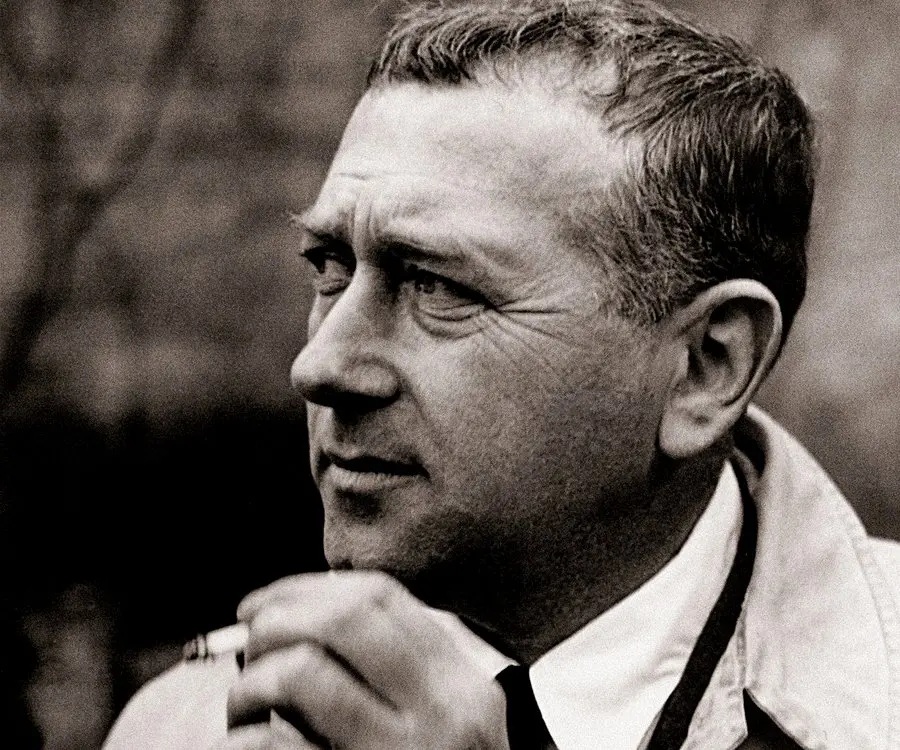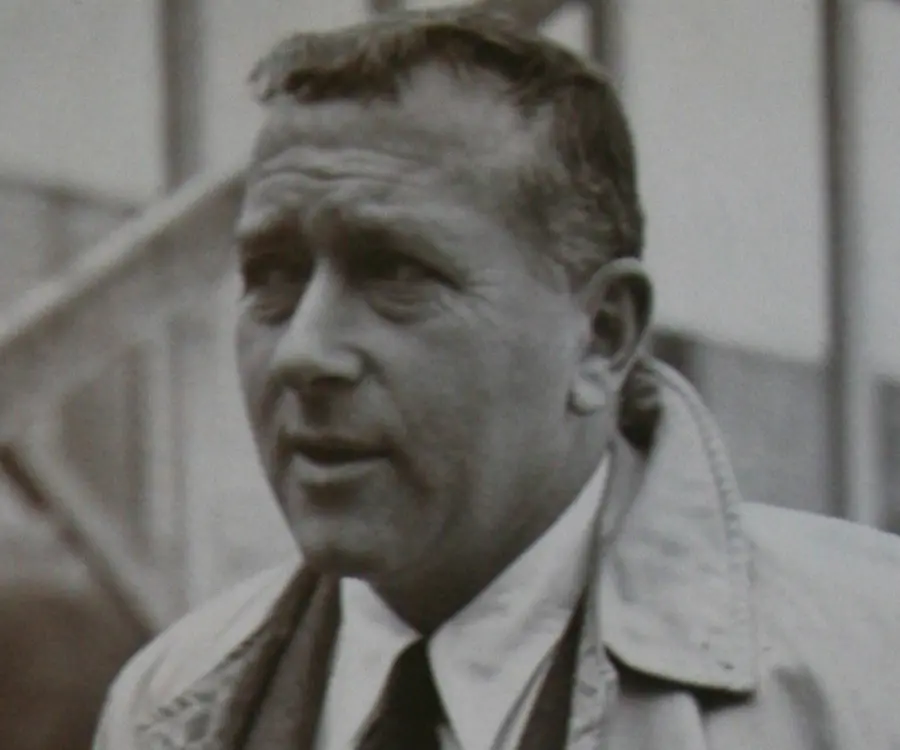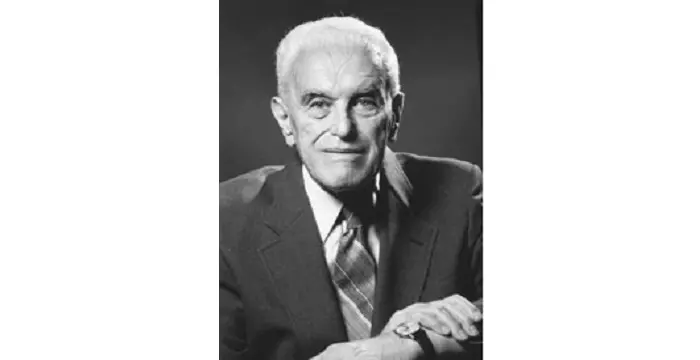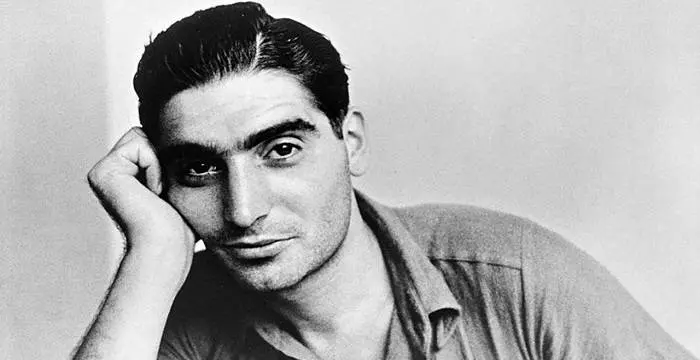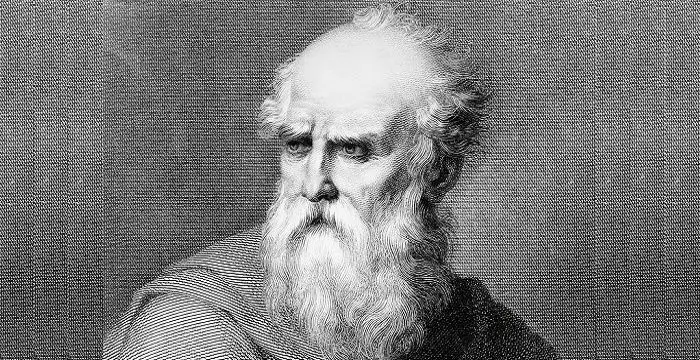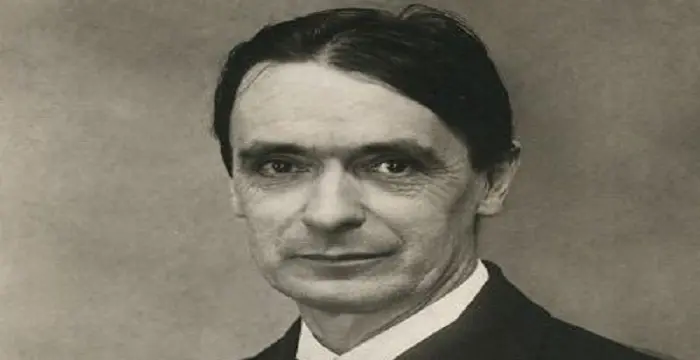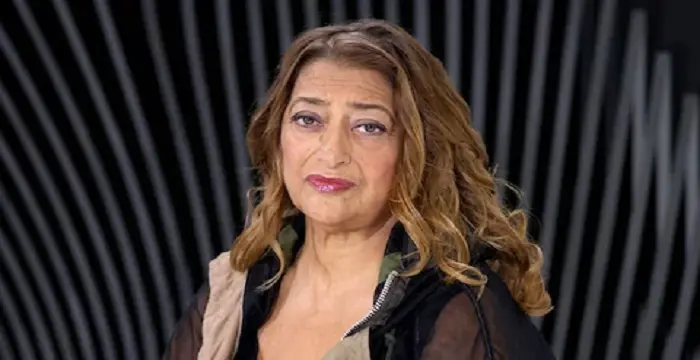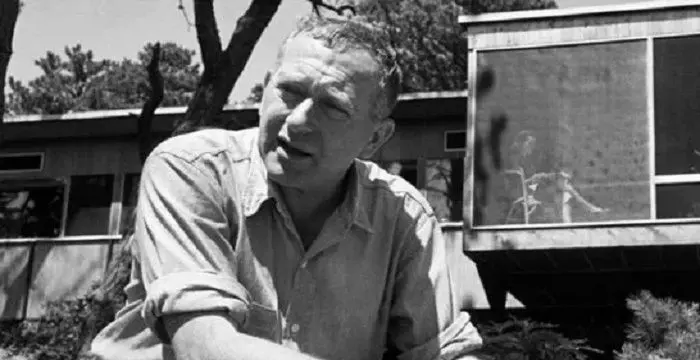
Marcel Breuer - Furniture Designer, Timeline and Childhood
Marcel Breuer's Personal Details
Marcel Lajos Breuer was a world famous modernist architect and designer considered as one of the most prominent proponents of International Style
| Information | Detail |
|---|---|
| Birthday | May 21, 1902 |
| Died on | July 1, 1981 |
| Nationality | Hungarian |
| Famous | Architects, Furniture Designer, Hungarian Men |
| Spouses | Constance Crocker Leighton, Marta Erps |
| Known as | Marcel Lajos Breuer, Бройер, Марсель |
| Childrens | Cesca, Tom |
| Universities |
|
| Birth Place | Pécs, Austria-Hungary |
| Religion | Judaism |
| Gender | Male |
| Father | Jacques Breuer |
| Mother | Franciska (Kan) Breuer |
| Sun Sign | Taurus |
| Born in | Pécs, Austria-Hungary |
| Famous as | Architect & Furniture Designer |
| Died at Age | 79 |
Marcel Breuer's photo
Who is Marcel Breuer?
Marcel Lajos Breuer was a world famous modernist architect and designer considered as one of the most prominent proponents of International Style. This Hungary-born architect was a product of famous ‘Bauhaus’ design school in Weimar where he took training in the school’s cabinet making workshop. The ‘Haus am Horn’ exhibition of the ‘Bauhaus’ in 1923 displayed many furniture designs of this promising student including a dressing table, which was his journeyman project. In his early career he became master as well as head of the cabinet making workshop of ‘Bauhaus’ where he once learned as a pupil. His initial creations include ‘Wassily’, an all-tubular chair of steel. He taught architecture at the ‘School of Design’ of ‘Harvard University’. He later established his own firm, ‘Marcel Breuer and Associates’. His notable works include ‘Gropius House’; ‘Hagerty House’; assignments of St. John’s Abbey and University in Collegeville, Minnesota; ‘World Headquarters’ of ‘UNESCO’; ‘Department of HUD – Headquarters’ in Washington, D.C. and ‘Atlanta Central Public Library’ in Atlanta. The ‘American Institute of Architects’ awarded him ‘Gold Medal’ in 1968 during their hundredth annual convention, held at Portland, Oregon.
// Famous Hungarian Men
John C Harsanyi
Read on to know the profile, career, important works, contributions and timeline of the famous American economist and Nobel Laureate, John C Harsanyi.
Erno Rubik
The famous inventor and educationist, Erno Rubik is known world-wide for his invention the ‘Rubik’s Cube’. To know more about the childhood, profile, timeline and career of this famous architect-inventor read on.
Robert Capa
Robert Capa was a Hungarian war photographer and photojournalist who later became a naturalized US citizen. This biography of Robert Capa provides detailed information about his childhood, life, achievements, works & timeline
Childhood & Early Life
He was born on May 21, 1902, in Danube valley town of Pécs, Hungary, to Jacques Breuer and Franciska (Kan) Breuer. His father was a physician.
He completed his graduation in 1920 from the ‘Magyar Királyi Föreáliskola’ in Pécs. After receiving a scholarship he began studying at the ‘Academy of Fine Arts’ in Vienna but dropped out after a few weeks and joined a Viennese architectural studio. He showed keen interest to get trained in the architect’s brother’s cabinetmaking shop.
He moved to Germany in 1921, after he came to know about the ‘Bauhaus’ design school in Weimar. The ‘Bauhaus’, which was founded and led by Walter Gropius, applied modern principles to fine arts and industrial designs.
He began his training at the ‘Bauhaus’ and designed several wooden furniture that included an ‘African Chair’ and ‘Sommerfeld House’ furniture in 1921 and a ‘Slatted Chair’ that he started designing in 1922.
In 1924, he completed his post graduation from the ‘Bauhaus’ and moved to Paris, France, to further his studies in architecture. It is here that he met Le Corbusier, one of the pioneers of modern architecture.
Career
He was convinced by Walter Gropius to return to the ‘Bauhaus’ in 1925, which by that time shifted to Dessau. He was appointed as a master as well as head of the cabinet making workshop of the ‘Bauhaus’. He was also delegated with designing the interiors of the new school building in Dessau from 1925 to 1931.
The architecture of bicycle handlebars inspired him to create the tubular metal chair ‘Wassily’, in 1925. Many of his architectural creations including the chair were manufactured in bulk by the ‘Thonet Brothers’ in Germany.
He was delegated to do interiors of the housing estate, the ‘Weissenhof Estate’ that was built for exhibition in 1927 in Stuttgart, Germany.
With the help of Gropius, he received his first independent house commission ‘Harnischmacher House I’ in Wiesbaden in 1932.
During 1932-36, he collaborated with Alfred and Emil Roth and designed the ‘Doldertal Apartments’ in Zurich, for Sigfried Giedion, a Swiss architectural historian.
The upsurge of the Nazis in 1930s and rule of Hitler saw forced closure of ‘Bauhaus’ in 1933. In 1934 his mentor Gropius tactfully fled from Germany and in 1935 following Gropius’s advice, Breuer also relocated to London.
He joined the ‘Isokon” company, an early proponent of modernist architecture in the United Kingdom that was involved in designing and constructing modernist houses and flats as also their furniture and fittings. He was appointed by Jack Pritchard who ran the company. The furnitures designed by him in Isokon were ‘Long Chair’ during 1935 to 1936 and ‘Nesting Tables’, ‘Dining Table’ and ‘Stacking Chairs’ in 1936.
He also designed Gane's Exhibition Pavilion (1936), in Bristol; model for the ‘Civic Center of the Future (1936) and Houses in Hampshire (1938) in Sussex in collaboration with English architect Francis Reginald Stevens Yorke professionally known as F.R.S. Yorke.
When Walter Gropius was inducted in ‘Harvard University’ in the United States, as the Chairman of the ‘Department of Architecture’ in 1938, Breuer also joined the faculty. His students included I. M. Pei, Ulrich Franzen, Paul Rudolph and Edward Larrabee Barnes.
Gropius and Breuer formed a partnership and executed many projects together. These include the ‘Gropius House’ (1938) in Lincoln, Massachusetts; ‘New York World's Fair’ (1939) in Pennsylvania State Exhibition; ‘The Alan I W Frank House’ (1939-40) in Pittsburgh; ‘Weizenblatt House’ (1941) in Asheville, North Carolina and ‘Aluminum City Terrace’ (1942 – 44) in New Kensington, Pennsylvania. Thereafter they parted ways professionally.
While he was still in Harvard, in 1945, he worked on the ‘Geller House I’ in Lawrence, New York, which was the first house to adopt the ‘binuclear’ house concept of Breuer. According to the concept different sections were allocated for bedrooms, living room, dining room, kitchen etc. which were segregated by an entry hall and included a remarkable butterfly roof. The excellent architecture was subsequently inducted as part of vocabulary of the famous modernist style of architecture.
He relocated to New York City in 1946 and set up his office at a townhouse in East 88th Street. Harry Seidler, an Austria-born Australian architect who emerged as a pioneering proponent of Modernist architecture in Australia, became his chief draftsman.
He constructed two houses for himself, the first one, ‘Breuer House’, a cantilevered house built in 1947 in New Canaan I, Connecticut and the second one also called the ‘Breuer House’, built on rubble stone in 1951 in New Canaan II, Connecticut.
His lifetime saw him working with different associates at different points of time including Eduardo Catalano, Herbert Beckhard, Tician Papachristou and Hamilton Smith.
He collaborated with Hamilton Smith, Craig Ellwood, Robert Gatje and Herbert Beckhard at different points of time from 1953 to 1976 and executed a chain of commissions including manufacturing plants, administrative building, technical centre and machine division received from ‘Torin Corp’.
Some of his other notable commissions are ‘De Bijenkorf’ (1955–57) in Rotterdam; research centre of ‘International Business Machines’ (IBM) (1960–62) in La Gaude, France and headquarters of ‘ Department of Housing and Urban Development’ (‘HUD’) (1963–68) in Washington, D.C..
Major Works
His real breakthrough came in 1953 when he received the two most significant institutional buildings commissions. The first one was the ‘World Headquarters’ of the ‘United Nations Educational, Scientific and Cultural Organization’ (‘UNESCO’) in Paris that he designed in association with Bernard Zehrfuss and Pier Luigi Nervi.
The second one was a series of assignments received from St. John’s Abbey and University in Collegeville, Minnesota, which he executed from 1953 to 1968, mostly in association with Hamilton Smith.
Personal Life & Legacy
he got married twice in his life. His first wife was Marta Erps and his second wife was Constance Crocker Leighton with whom he had two children, a daughter, Cesca and a son, Tom.
He died on July 1, 1981 in New York City, US.
// Famous Architects
Vitruvius
Vitruvius was a Roman architect, author, and military engineer during the 1st century BC. Check out this biography to know about his childhood, family life, achievements and fun facts about his life.
Rudolf Steiner
Rudolf Steiner introduced groundbreaking ideas in realms of spirituality, art, education and agriculture. Check out this biography to know about his childhood, family life, achievements and other facts related to his life.
Zaha Hadid
The famous Iraqi-British architect Zaha Hadid is known for her designs of the ‘Rosenthal Center for Contemporary Art’ and ‘Heydar Aliyev Center’. To know more about her childhood, profile, career and timeline read on.
Marcel Breuer biography timelines
- // 21st May 1902He was born on May 21, 1902, in Danube valley town of Pécs, Hungary, to Jacques Breuer and Franciska (Kan) Breuer. His father was a physician.
- // 1920He completed his graduation in 1920 from the ‘Magyar Királyi Föreáliskola’ in Pécs. After receiving a scholarship he began studying at the ‘Academy of Fine Arts’ in Vienna but dropped out after a few weeks and joined a Viennese architectural studio. He showed keen interest to get trained in the architect’s brother’s cabinetmaking shop.
- // 1921He moved to Germany in 1921, after he came to know about the ‘Bauhaus’ design school in Weimar. The ‘Bauhaus’, which was founded and led by Walter Gropius, applied modern principles to fine arts and industrial designs.
- // 1921 To 1922He began his training at the ‘Bauhaus’ and designed several wooden furniture that included an ‘African Chair’ and ‘Sommerfeld House’ furniture in 1921 and a ‘Slatted Chair’ that he started designing in 1922.
- // 1924In 1924, he completed his post graduation from the ‘Bauhaus’ and moved to Paris, France, to further his studies in architecture. It is here that he met Le Corbusier, one of the pioneers of modern architecture.
- // 1925The architecture of bicycle handlebars inspired him to create the tubular metal chair ‘Wassily’, in 1925. Many of his architectural creations including the chair were manufactured in bulk by the ‘Thonet Brothers’ in Germany.
- // 1927He was delegated to do interiors of the housing estate, the ‘Weissenhof Estate’ that was built for exhibition in 1927 in Stuttgart, Germany.
- // 1932With the help of Gropius, he received his first independent house commission ‘Harnischmacher House I’ in Wiesbaden in 1932.
- // 1932 To 1936During 1932-36, he collaborated with Alfred and Emil Roth and designed the ‘Doldertal Apartments’ in Zurich, for Sigfried Giedion, a Swiss architectural historian.
- // 1938When Walter Gropius was inducted in ‘Harvard University’ in the United States, as the Chairman of the ‘Department of Architecture’ in 1938, Breuer also joined the faculty. His students included I. M. Pei, Ulrich Franzen, Paul Rudolph and Edward Larrabee Barnes.
- // 1945While he was still in Harvard, in 1945, he worked on the ‘Geller House I’ in Lawrence, New York, which was the first house to adopt the ‘binuclear’ house concept of Breuer. According to the concept different sections were allocated for bedrooms, living room, dining room, kitchen etc. which were segregated by an entry hall and included a remarkable butterfly roof. The excellent architecture was subsequently inducted as part of vocabulary of the famous modernist style of architecture.
- // 1946He relocated to New York City in 1946 and set up his office at a townhouse in East 88th Street. Harry Seidler, an Austria-born Australian architect who emerged as a pioneering proponent of Modernist architecture in Australia, became his chief draftsman.
- // 1947 To 1951He constructed two houses for himself, the first one, ‘Breuer House’, a cantilevered house built in 1947 in New Canaan I, Connecticut and the second one also called the ‘Breuer House’, built on rubble stone in 1951 in New Canaan II, Connecticut.
- // 1953 To 1976He collaborated with Hamilton Smith, Craig Ellwood, Robert Gatje and Herbert Beckhard at different points of time from 1953 to 1976 and executed a chain of commissions including manufacturing plants, administrative building, technical centre and machine division received from ‘Torin Corp’.
- // 1953His real breakthrough came in 1953 when he received the two most significant institutional buildings commissions. The first one was the ‘World Headquarters’ of the ‘United Nations Educational, Scientific and Cultural Organization’ (‘UNESCO’) in Paris that he designed in association with Bernard Zehrfuss and Pier Luigi Nervi.
- // 1953 To 1968The second one was a series of assignments received from St. John’s Abbey and University in Collegeville, Minnesota, which he executed from 1953 to 1968, mostly in association with Hamilton Smith.
- // 1st Jul 1981He died on July 1, 1981 in New York City, US.
// Famous Taurus Celebrities peoples
Jason Simpson
Jason Simpson is the son of former NFL running back, broadcaster and actor O. J. Simpson. Check out this biography to know about his childhood, family, life, and little known facts about him.
Sophie Reade
Sophie Victoria Reade is a British model and reality show star. Let’s take a look at her family and personal life, including her age, birthday, boyfriends, and some interesting facts.
ASMR Aspen
ASMR Aspen is an American YouTuber. Check out this biography to know about her birthday, childhood, family life, achievements and fun facts about her.
Bertil Gotthard Ohlin
Bertil Gotthard Ohlin was a famous Swedish economist. This biography profiles his childhood, family life & achievements.
Josh Temple
Check out all that you wanted to know about Josh Temple (Slogoman), the famous British YouTube Personality; his birthday, his family and personal life, his girlfriends, fun trivia facts and more.
Aidan Prince
Aidan Prince is an American dancer, actor and vlogger. Let’s have a look at his family and personal life including age, date of birth, net worth, and fun facts.
Marcel Breuer's FAQ
What is Marcel Breuer birthday?
Marcel Breuer was born at 1902-05-21
When was Marcel Breuer died?
Marcel Breuer was died at 1981-07-01
Where was Marcel Breuer died?
Marcel Breuer was died in New York City
Which age was Marcel Breuer died?
Marcel Breuer was died at age 79
Where is Marcel Breuer's birth place?
Marcel Breuer was born in Pécs, Austria-Hungary
What is Marcel Breuer nationalities?
Marcel Breuer's nationalities is Hungarian
Who is Marcel Breuer spouses?
Marcel Breuer's spouses is Constance Crocker Leighton, Marta Erps
Who is Marcel Breuer childrens?
Marcel Breuer's childrens is Cesca, Tom
What was Marcel Breuer universities?
Marcel Breuer studied at Bauhaus
What is Marcel Breuer's religion?
Marcel Breuer's religion is Judaism
Who is Marcel Breuer's father?
Marcel Breuer's father is Jacques Breuer
Who is Marcel Breuer's mother?
Marcel Breuer's mother is Franciska (Kan) Breuer
What is Marcel Breuer's sun sign?
Marcel Breuer is Taurus
How famous is Marcel Breuer?
Marcel Breuer is famouse as Architect & Furniture Designer
